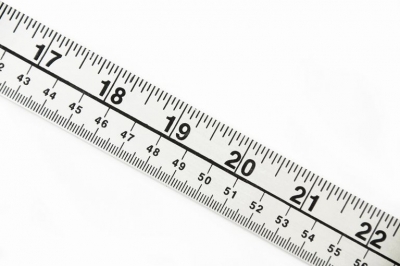
A metre is called a metre after the Greek word ‘metron’ meaning a measure. It did not exist until 1791, when it was adopted as a new measurement of distance in France. Until then all sorts of inefficient weights and measures were in use. It took the French Revolution to sweep these aside and come in with something really new and slick. The government which took power after the Revolution wanted a system that was accurate and could be used by everyone. A dozen leading scholars were sent away to find the answer, and they came up with the metre.
They decided that one metre should equal one ten-millionth of the length round the world, following a line from the North Pole to the Equator and passing through Paris. To make multiplication and division easy, they also decided to base their new unit on the number ten. At the same time, the gram was introduced to replace the old-fashioned units of weight. And the litre became the new liquid measures.
The success of their ‘invention’ speaks for itself. In two hundred years the metre has spread all round the world. It is the standard system of measurement in most trades and professions and it is used in an ever growing number of countries worldwide.
Picture Credit : Google




